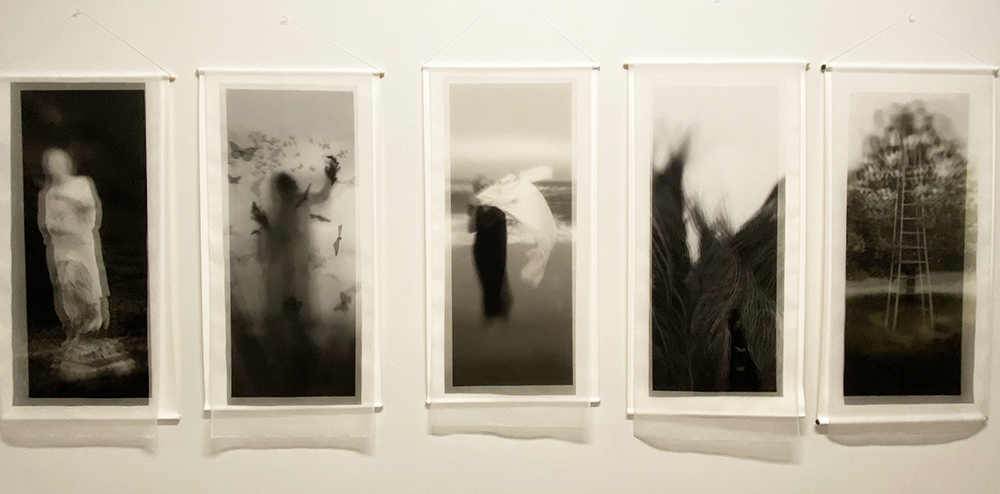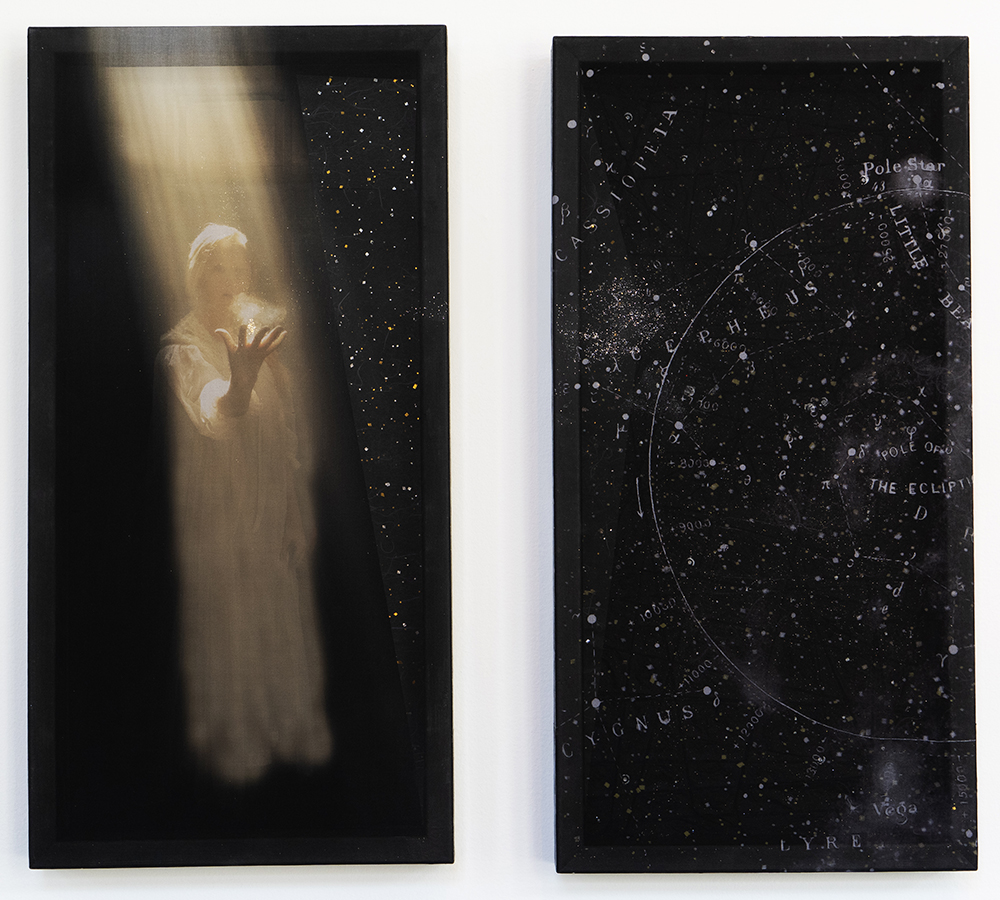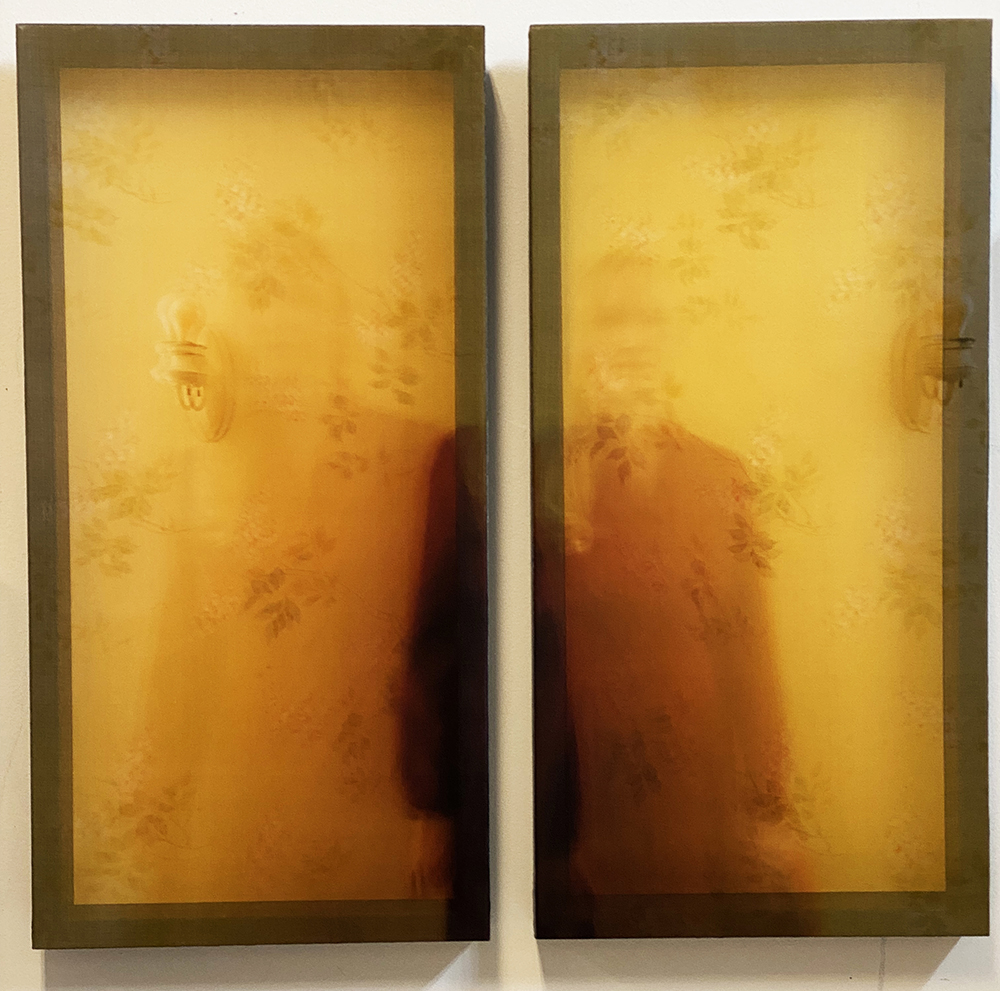Kirsten Hoving: Fabricated Visions
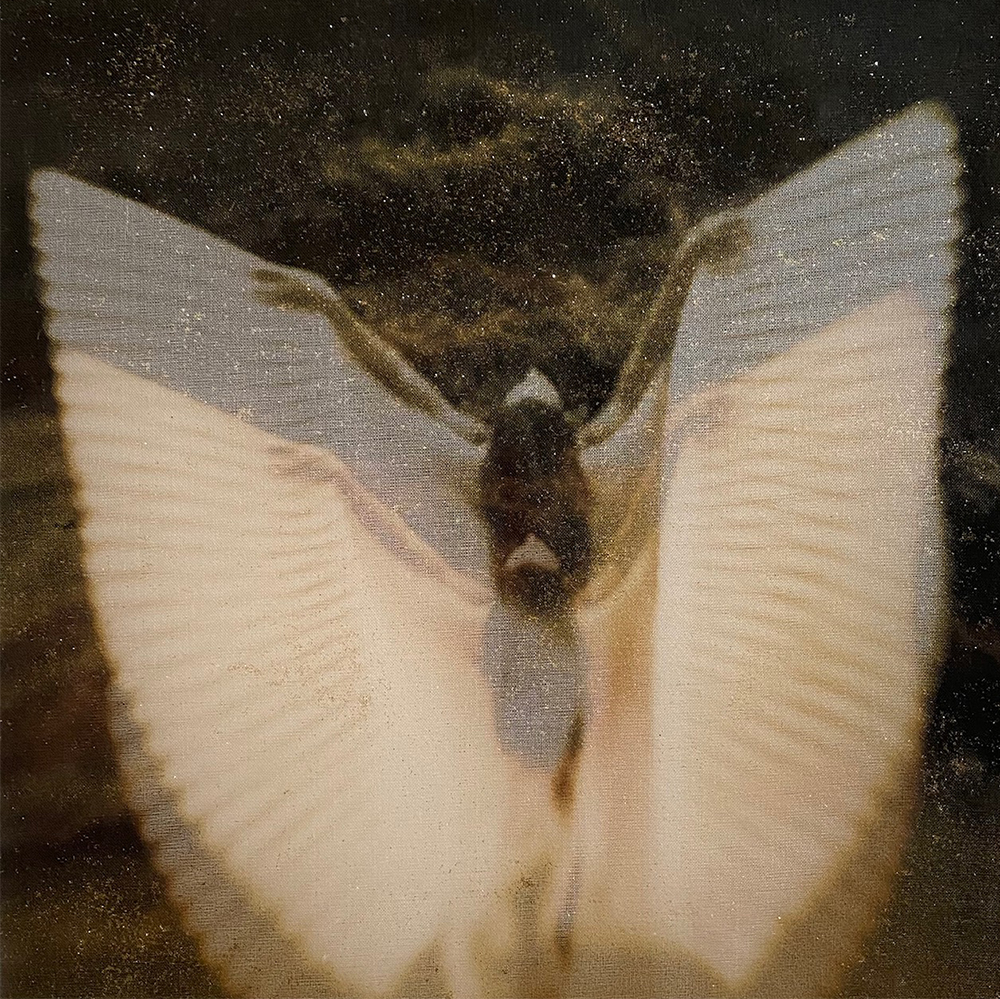
©Kirsten Hoving, Ascension, digital photograph on silk organza mounted on glass over a second paper photograph. 15 x 15 inches
I met Kirsten Hoving at the Slow Exposures Festival in Zebulon, Georgia, back in 2022. Since then, I have seen her once or twice a year on the Barrier Islands of Georgia as part of Pigs Fly Retreats and the Southern Wild Artist Residency. The first time I met her, I bought one of her unique silk-layered 3D images. Earlier this year, my friend Addison Brown and I went to Charleston, South Carolina to see a show of photo objects curated by Kirsten. We also got to visit her studio and see much more of her unique and beautiful work which was such a treat.

©Kirsten Hoving, Gateway, digital photograph on silk organza mounted over a second paper photograph in a shadowbox. 4 x 4 inches
Kirsten Hoving is a photographer and interdisciplinary artist from Charleston, SC, whose art balances on the edge between fact and fiction. Over the last fifteen years, Hoving has shown her work in galleries around the world and has published several books, including Svala’s Saga, a project done in collaboration with photographer Emma Powell. After earning her PhD in art history from Columbia University, Hoving had a long career as a professor and scholar of modern art, with books and articles on many topics, including Surrealist photography and the assemblages of Joseph Cornell. Those interests inform her creative practice.
Follow on Instagram: @kirstenhovingartworks

©Kirsten Hoving, Boneyard, diptych, digital photographs on silk organza mounted in shadowboxes each measuring 12 x 24 inches
Our imagination, I believe, is what makes us human, and our ability to see the world through metaphors, stories, and poetic allusions connects our minds to our hearts. In my work, I combine photographs with unusual processes, materials, and presentations to evoke quiet dreams, myths, and half-remembered tales. Using unexpected viewpoints, three-dimensionality, and kinetic elements, I seek to expand photography’s decisive moments into visionary states of mystical wonder. – Kristen Hoving
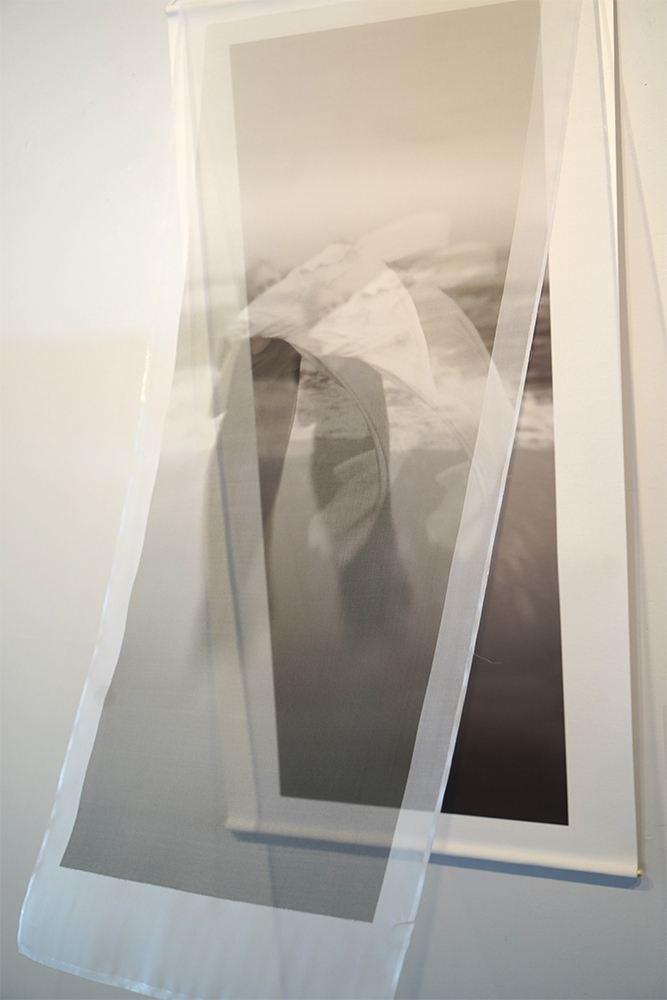
©Kirsten Hoving, Farewell, digital photograph on silk organza mounted over a second photograph on canvas in a scroll format 17 x 40 inches
GB: Tell us a little bit about your childhood and how you became an artist?
KH: I grew up in the suburbs of Philadelphia, where I spent most of my childhood reading, drawing, and playing tennis. I suppose the reading and drawing parts pointed me in the direction of the art world, although I spend thirty-six years as a professor of art history at Middlebury College in Vermont before I retired and became a full-time artist. My work as an art historian involved teaching and writing about modern art and the history of photography. When I began teaching photo history, I took some workshops to learn about the history of the medium—daguerreotypes, tintypes, etc.—as well as current practices, and I became hooked. Over the last five years, I have worked primarily with photo images on silk organza, presented in a variety of ways.
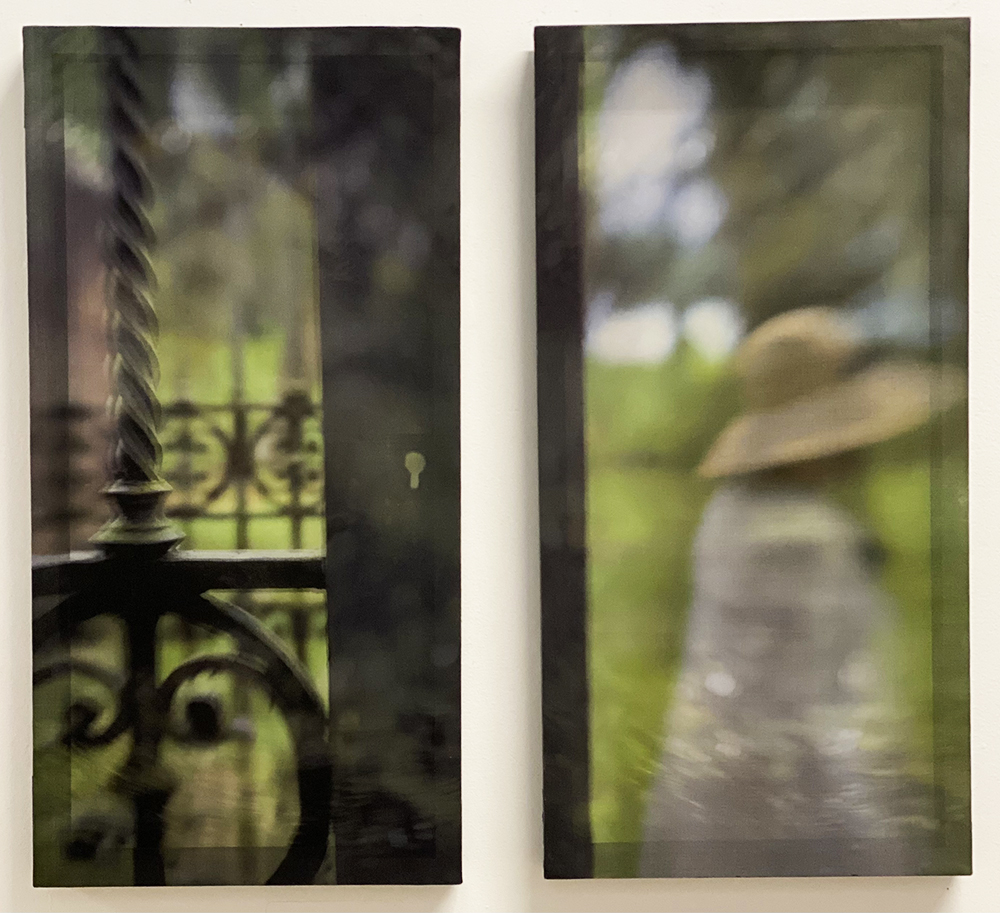
©Kirsten Hoving, Gate, diptych, digital photographs on silk organza mounted in shadowboxes each measuring 12 x 24 inches
GB: Talk about your process of making these and how you discovered this way of working.
KH: I initially bought a small package of silk made for digital printing to use for pages in handmade books. I made my first test print and realized that the material was just too flimsy to hold up as a book page, and that the image was too faint. I just stuck it up on my studio wall. I had a print of the same image on paper and I stuck that underneath to give it more definition and low and behold it turned into this bizarre three-dimensional thing, almost like a holograph. The catch was to figure out how to mount the silk over the paper to replicate that effect.
I started with deep shadowboxes with silk on the tops and inner parts of the boxes, but I wasn’t happy with the deep box format. I tried gluing the edges of the fabric on glass and mounting that over a paper print with a spacer in between, and I have made a lot of work using this technique. I made free-flowing silks mounted over photos on cradle boards, and when those got too bulky to store and ship, I started making long scrolls. The scrolls work well for shipping off to shows. I also make little 4 x 4 inch shadowboxes—these are great for trying out ideas and are also very portable. Now I’m making paired shadowbox diptychs for a show called “Wanderings in the Mermaid’s Palace and Other Photographic Fantasies” that will be on view this fall at the Redux Contemporary Art Center in Charleston.
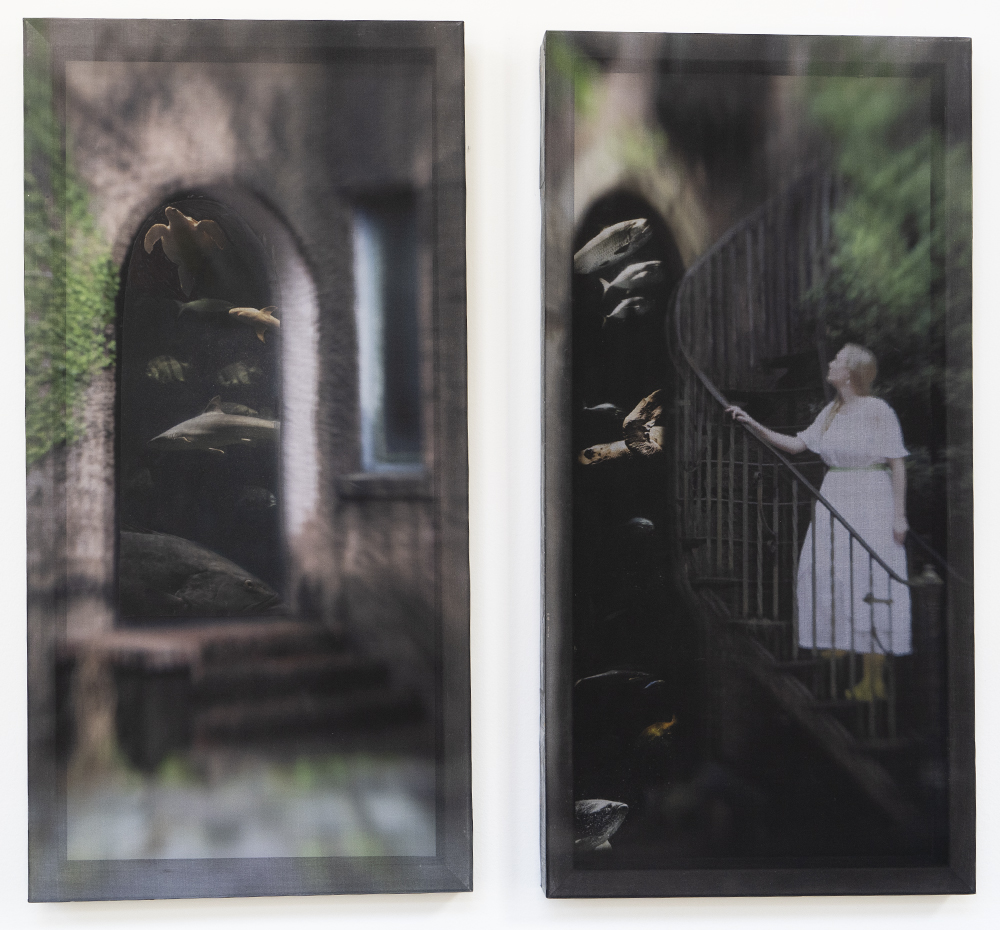
©Kirsten Hoving, In the Mermaid’s Palace, diptych, digital photographs on silk organza mounted in shadowboxes each measuring 12 x 24 inches
GB: Discuss why the 3D qualities of these unique objects is important vs. just printing the image on paper. they appear quite different in person and change based on the viewer’s perspective.
KH: As an art historian, one of my primary research areas was the boxes of Joseph Cornell, so the box format has appealed to me from that standpoint. I wrote a book about Cornell and astronomy, and the stars also feature a lot in my work (you can’t deny that outer space has really deep space). But I think the biggest draw of using these materials in the way I do is that they go beyond being prints on paper physically and conceptually. They open, literally and figuratively, to fantasy, imaginary journeys, transformed landscapes and surreal places. As an art historian I also worked a lot on Surrealism, especially the history of Surrealist photography, so I find this mode of working touches on those roots as well.
I’m glad you mentioned that they look very different in person. I find my work is really hard to photograph because the kinetic and three-dimensional elements get lost. You really have to see them in person. Hmmm….so maybe I should just print the image on paper.

©Kirsten Hoving, Mermaids, diptych, digital photographs on silk organza mounted in shadowboxes each measuring 12 x 24 inches
GB: Why do you think that you want to escape reality in your photography? My theory is that you are such a positive human being.
KH: I love fantasy. Rather than escape, I think of my work as offering an exchange of one way of thinking about the world for another. As a child I loved Tolkein’s hobbits, and Narnia, and fairy tales, and any kind of fiction. I think the idea of trying to incorporate fiction in photography is one that inspired me.
Photography is a medium not often associated with fantasy—although it is now more in our digital and AI age than it was in former film days. The camera captures what is before the lens, a particular moment is recorded, and fact often takes precedence over fiction. My work runs counter to these accepted norms, and for years I have sought ways to expand the medium to allow room for dreams, myths, stories, and transcendent experiences. I create these alternative visions primarily through the materials I use—photographs printed on silk organza and layered over another image on paper, canvas or fabric, sometimes with additional collage material, that work together to create a filmy, three-dimensional effect. Lately I’ve been adding a lot of glitter to my work.
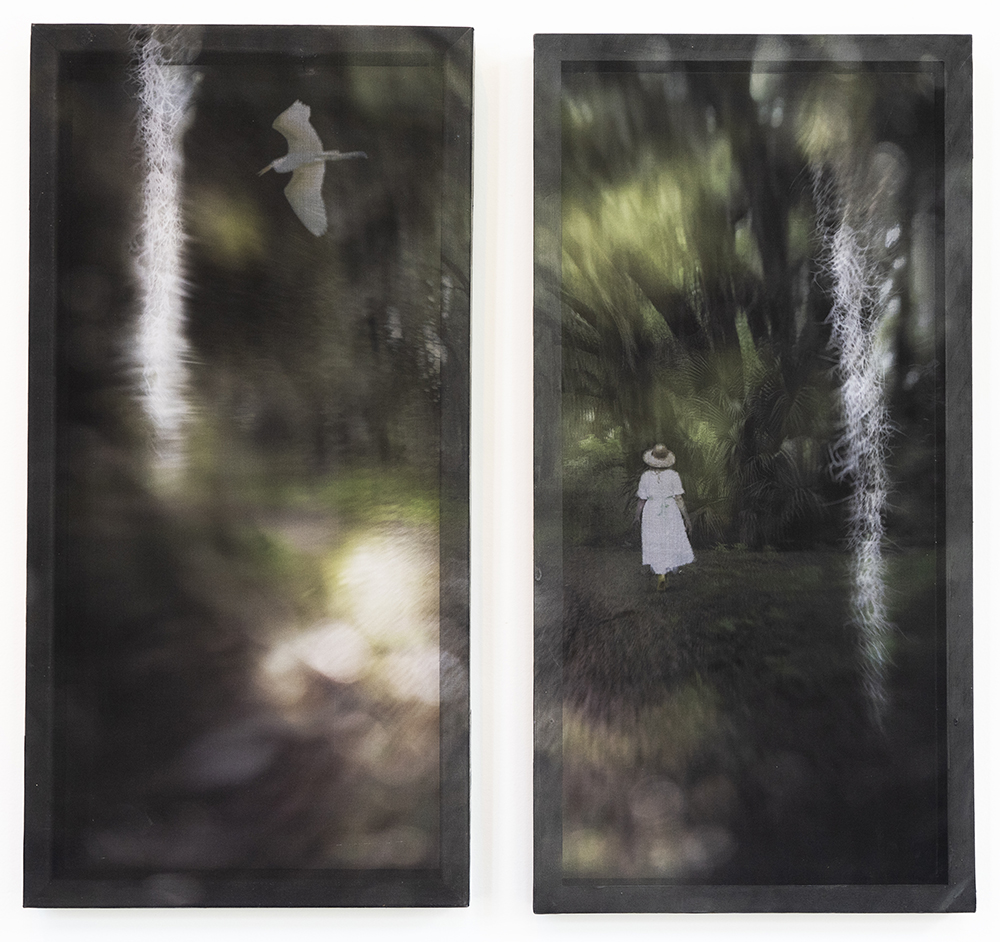
©Kirsten Hoving, Moss, diptych, digital photographs on silk organza mounted in shadowboxes each measuring 12 x 24 inches
GB: What is the “Wandering in the Mermaid’s Palace and Other Photographic Fantasies,” and how did this series begin?
KH: “Wanderings in the Mermaid’s Palace” is my personal code for letting my imagination run free and being in my studio every day. The exhibition will be the first showing of the diptych shadowboxes, so I’m interested in seeing how they go. Most of the work derives from shoots on barrier islands off the coast of South Carolina and Georgia, often with other photographers, including my main muse (and daughter) Emma Powell. I wanted to pull some of that work together in this larger shadowbox format instead of making scrolls, and to work in color.
Posts on Lenscratch may not be reproduced without the permission of the Lenscratch staff and the photographer.
Recommended
-
Ragne Kristine Sigmond: Portraits of Painterly LightDecember 2nd, 2025
-
Mary Pat Reeve: Illuminating the NightDecember 1st, 2025
-
Ricardo Miguel Hernández: When the memory turns to dust and Beyond PainNovember 28th, 2025
-
Pamela Landau Connolly: Columbus DriveNovember 26th, 2025
-
MATERNAL LEGACIES: OUR MOTHERS OURSELVES EXHIBITIONNovember 20th, 2025


